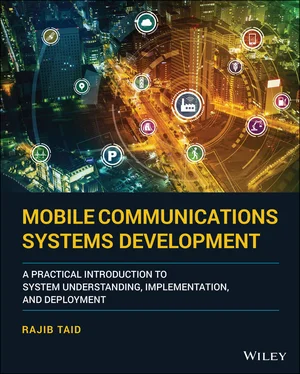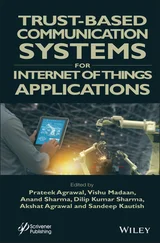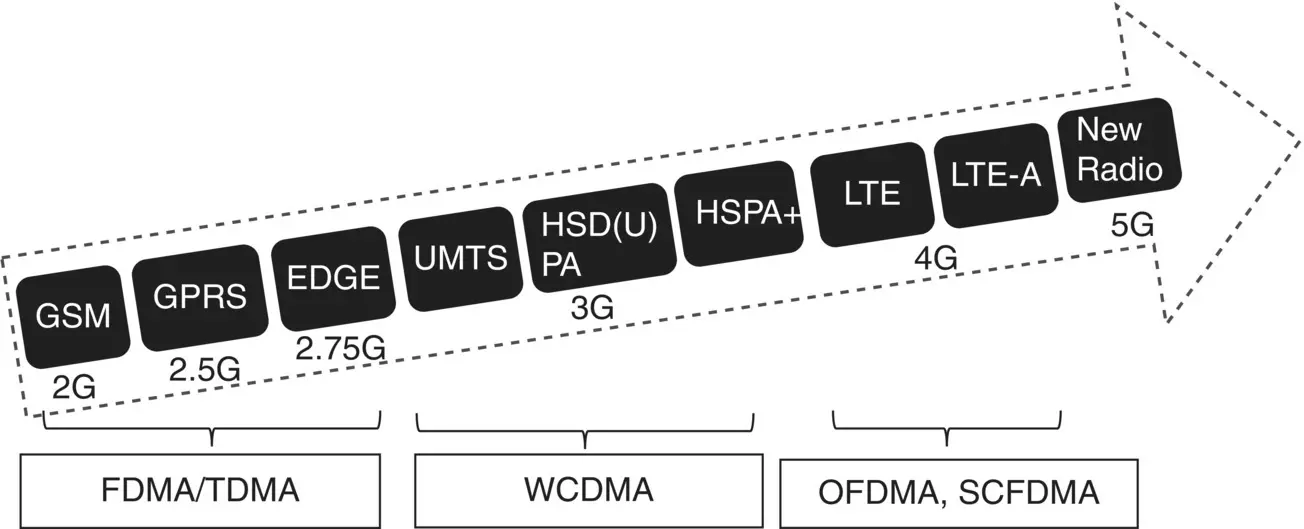
Figure 2.9 Illustration: 3GPP systems and air interface evolutions.
Table 2.2 Evolutions of 3GPP systems and their air interfaces.
| System/features |
Modulation techniques |
Bandwidth |
Throughputs |
| GSM (2G) |
GMSK |
200 KHz |
40 kbps |
| GPRS (2.5G) |
GMSK |
200 KHz |
171 kbps |
| EDGE (2.75G) |
GMSK, 8‐PSK |
200 KHz |
384 kbps |
| UMTS (3G) |
QPSK |
5 MHz |
384 kbps |
| HSDPA (3G) Feature |
DL: QPSK, 16 QAM UL: QPSK |
5 MHz |
DL: 14.4 Mbps UL: 384 kbps |
| HSUPA (3G) Feature |
DL: QPSK, 64 QAM UL: QPSK, 16 QAM |
5 MHz |
DL: 14.4 Mbps UL: 5.8 Mbps |
| HSPA+(3G) Feature |
DL: QPSK, 64 QAM UL: QPSK, 16 QAM |
5 MHz |
DL: 21–42 Mbps UL: 11 Mbps |
| LTE (4G) |
DL: QPSK, 64 QAM |
1.4, 3,5, 10, 15,20 MHz |
DL: 300 Mbps UL: 75 Mbps |
| LTE‐A (4G) |
DL: QPSK, 64 QAM |
1.4, 3,5, 10, 15, 20 MHz |
DL: 3 Gbps UL: 1.5 Gbps |
| 5G |
QPSK, 16/64/256 QAM |
5 to 400 MHz |
DL: 20 Gbps UL: 10 Gbps |
As shown in Table 2.2, the UMTS features and the LTE and 5G system air interface use the different modulation techniques in the UL and DL directions between the UE and RAN. Using GMSK modulation, one modulation symbol can carry 1 bit of data; one QPSK modulation symbol can carry 2 bits of data; one 16 Quadrature Amplitude Modulation (QAM) modulation symbol can carry 4 bits of data; and so on. The number of data bits transmitted per modulated symbol is called the modulation order . The throughput offered by different modulation techniques is shown in the fourth column.
UMTS features High-Speed Downlink Packet Access (HSDPA) and High-Speed Uplink Packet Access (HSUPA) are known as the High-Speed Packet Access (HSPA) method in the DL and UL directions, respectively. The HSPA+ feature is called as the evolution of the HSPA method. These access methods use the same modulation technique, i.e. QAM, but with different modulation orders. HSPA+ and HSUPA use higher (64) QAM than the HSDPA method. However, the HSPA+ method uses multiple-input multiple-output transmission techniques (MIMO) with two antennas for transmission of data from the UTRAN to UEs. More about the modulation techniques and MIMO transmissions are described later in Chapter 19.
2.3.2 Evolutions of 3GPP Networks Architectures
Along the path of evolutions, a new network element may be introduced or an existing one may be eliminated from the AN and CN domain of a particular mobile communications network and its architecture. For example, the LTE system has a simpler architecture having fewer nodes, channels, and less signaling messages than the UTRAN system. Network element such as the GPRS/UMTS SGSN also exists in an LTE/EPS network during the entire 3GPP mobile communications systems evolutions with enhanced roles being added to it. An engineer working on the GSM system will find it easy to understand the various aspects of the GPRS/Enhanced Data for Global Evolution (EDGE) system. Similarly, one will understand the LTE system better having working experience on the UMTS system. Figures 2.10– 2.12show the architectural differences among the different 3GPP systems releases, i.e. Release 99, Release 4, Release 5, and so on. Compare these architectures with the GSM network shown earlier in Figure 2.1with respect to the network element, interfaces, and signaling systems. More about the 3GPP group and its technical specification is described later in Section 2.5.
Release 99: The First UMTS Release Architecture
The 3GPP Release 99 system architecture that was shown earlier in Figure 2.3is illustrated again in Figure 2.10below in a slightly different way.
3GPP Release 99 evolved from the previous GSM/GPRS system in terms of new RAT only and introduces the new AN called the UTRAN , comprising a NodeB and an RNC. This implies that only the air interface had evolved from the TDMA/FDMA in GSM/GPRS system to the WCDMA scheme in UMTS while adapting to the CN elements from the pre‐release 99 GSM/GPRS network, with necessary software enhancements. However, as shown in Figure 2.3, new interfaces are being added in the UMTS Release 99 architecture, and they are different from the GSM and GPRS networks.
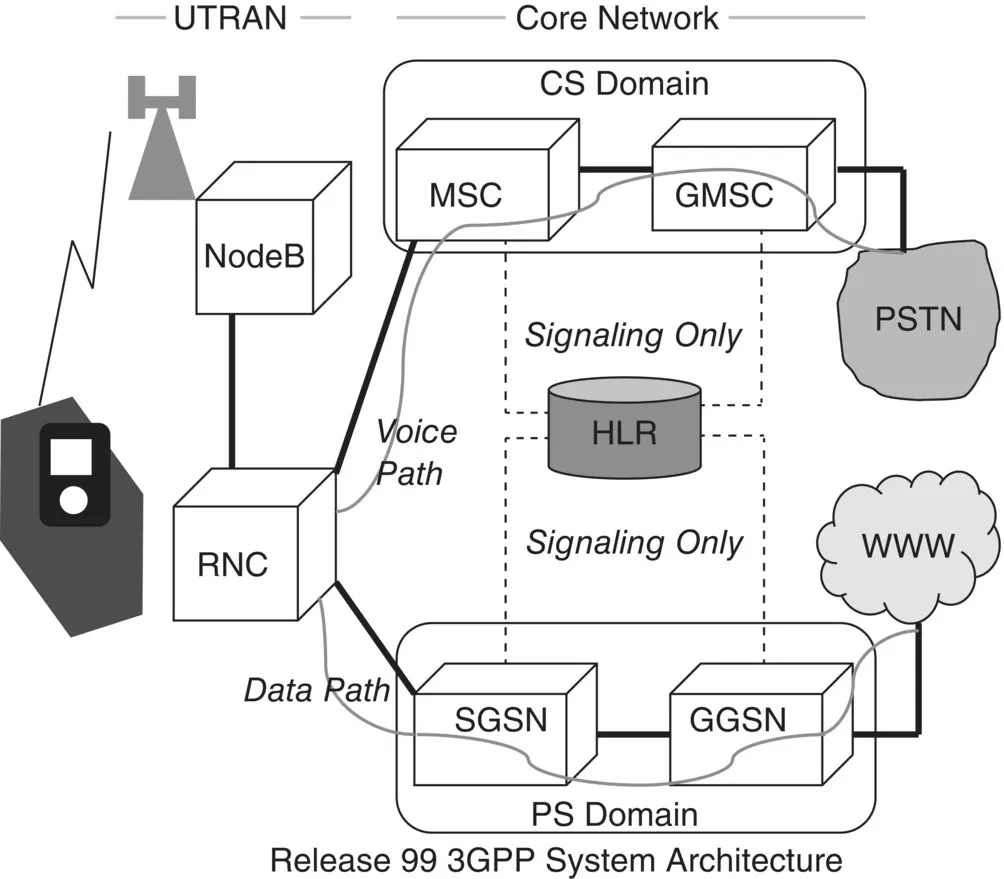
Figure 2.10 System architecture 3GPP Release 99.
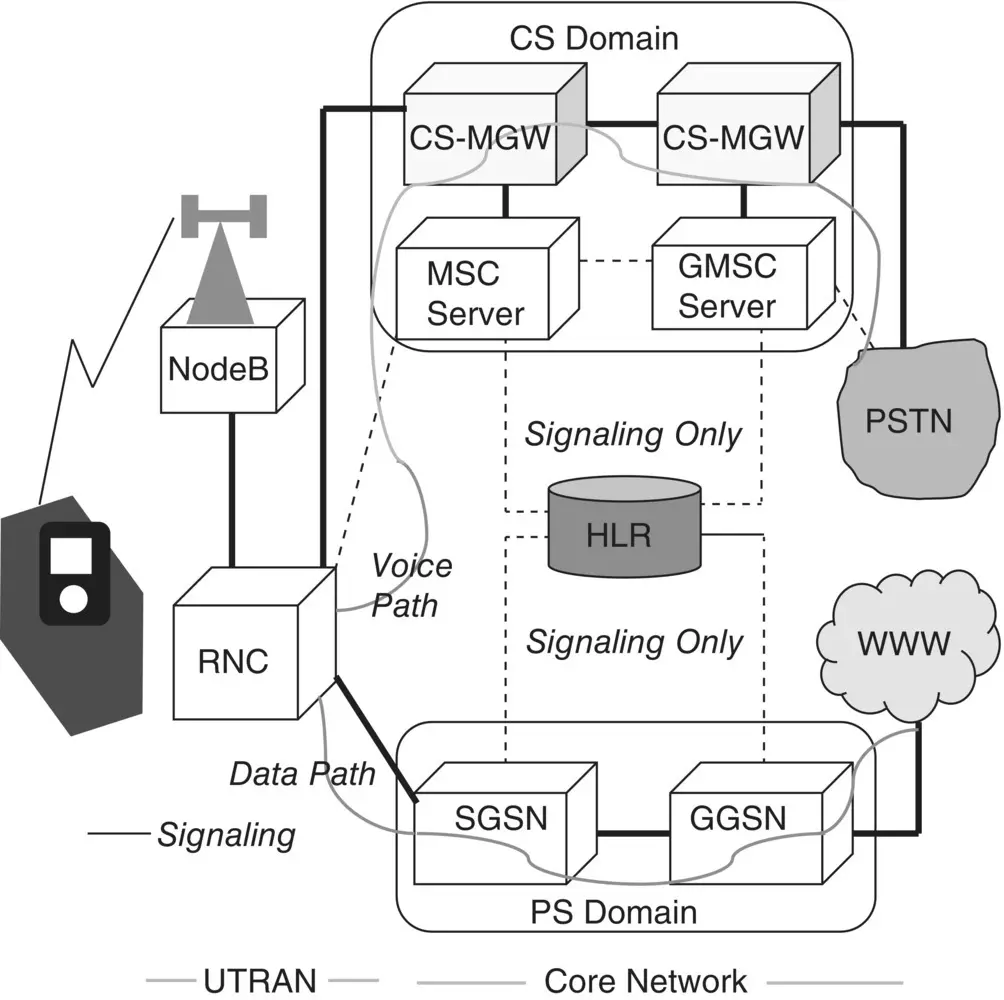
Figure 2.11 System architecture 3GPP Release 4.
Release 4 Architecture: Voice Call Through IP Transport Network
In the 3GPP Release 4 system architecture, Figure 2.11, changes were made only in the CS domain. In the case of the 3GPP Release 99 architecture, the CS domain core network elements – MSC and the GMSC – perform both the user traffic transport and the control/signaling, i.e. call control and mobility, functions. However, in the Release 4 architecture, the MSC has been separated into two entities: CS‐ Media Gateway (CS‐MGW) and MSC Server. CS‐MGW handles the transport of user traffic in the form of IP packets only between the RNC and the CS‐MGW. The MSC/GMSC Server handles the signaling (call control and mobility management) part only as shown, the dotted line between the RNC and MSC, in Figure 2.11.
The signaling activities last for a fraction of time only. The separation of the transport and signaling or control functions between MSC Server and the CS‐MGW is achieved through a new Release 4 feature called the Bearer‐Independent Core Network (BICN) . Because of this, in the CN, IP has been introduced as the new transport network to transport voice call traffic in the form of IP packets only instead of 64 kbits/timeslot format as it was the case during the UMTS Release 99 and pre‐Release 99 core networks, i.e. GSM. In these 3GPP releases, a voice call is carried through 64 kbits/timeslot format over the A‐interface between the BSC and MSC.
3GPP Release 5 Architecture: All IP Network
The 3GPP Release 5 system architecture is shown in Figure 2.12. In comparison to the previous architectures, this evolution is based on the three major changes that were introduced in the Release 5 architecture:
An all IP network through the usage of the IP as the only transport network right from the NodeB to the CN elements.
The introduction of the IMS for multimedia services, e.g. voice call and Home Subscriber Server (HSS) in place of HLR (Release 4).
High‐Speed Downlink Packet Access (HSDPA) feature to increase the data transmission speed from the UTRAN to the UE in the DL direction.
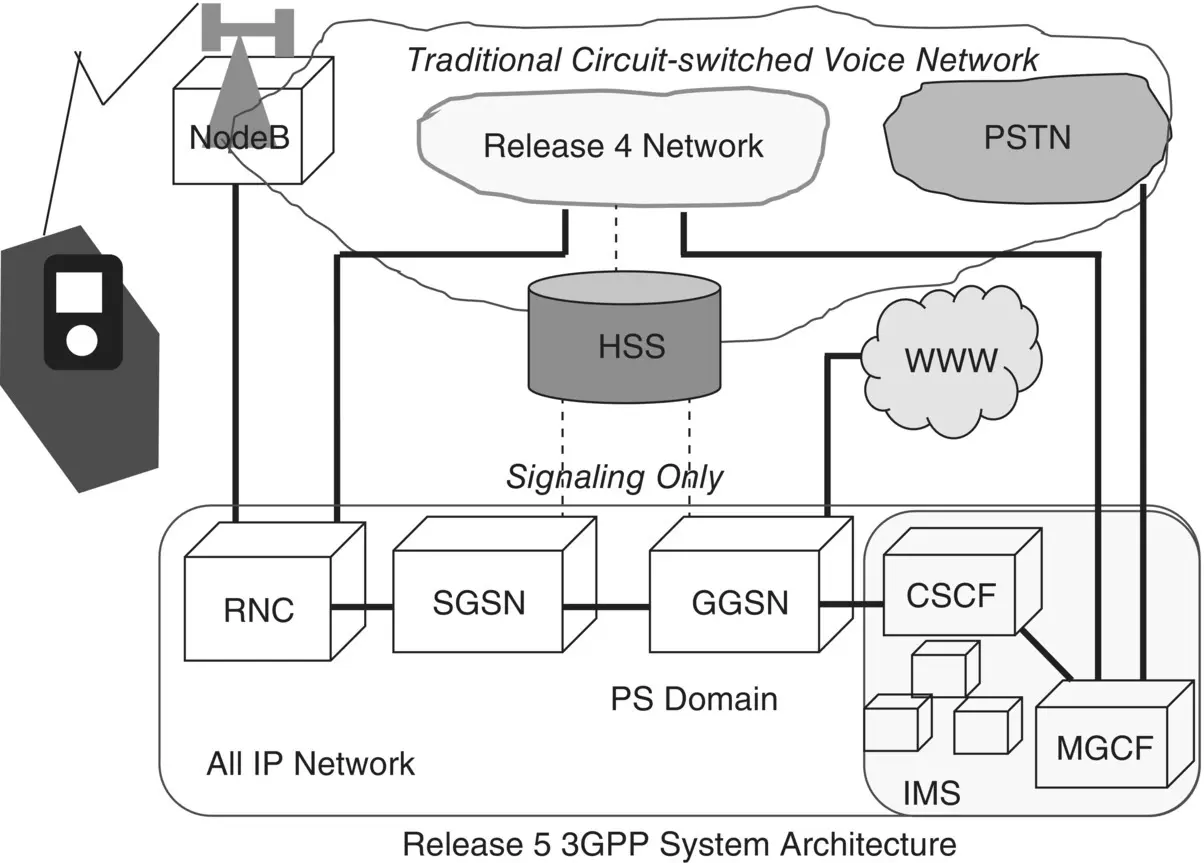
Figure 2.12 System architecture 3GPP Release 5.
In this architecture, there is no CS domain, but any CS voice call is routed through the IMS Media Gateway (MGCF) node in Release 5 to the existing Release 4 network.
3GPP Release 8: First Version of LTE System
Читать дальше
